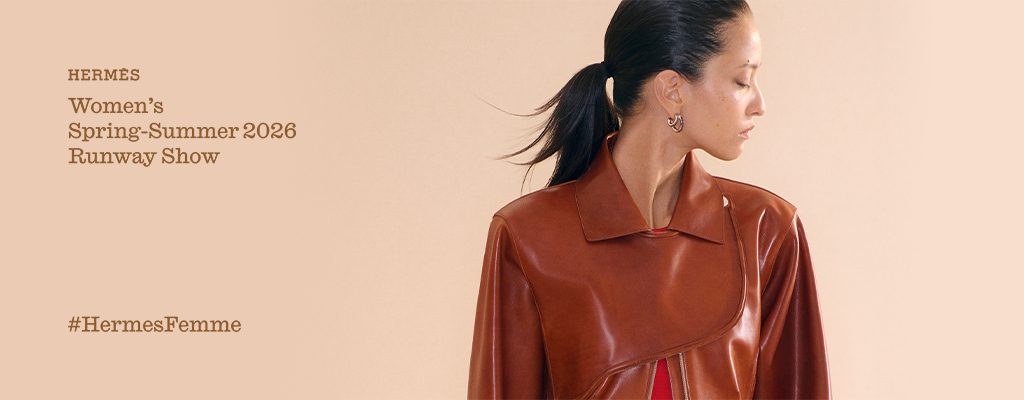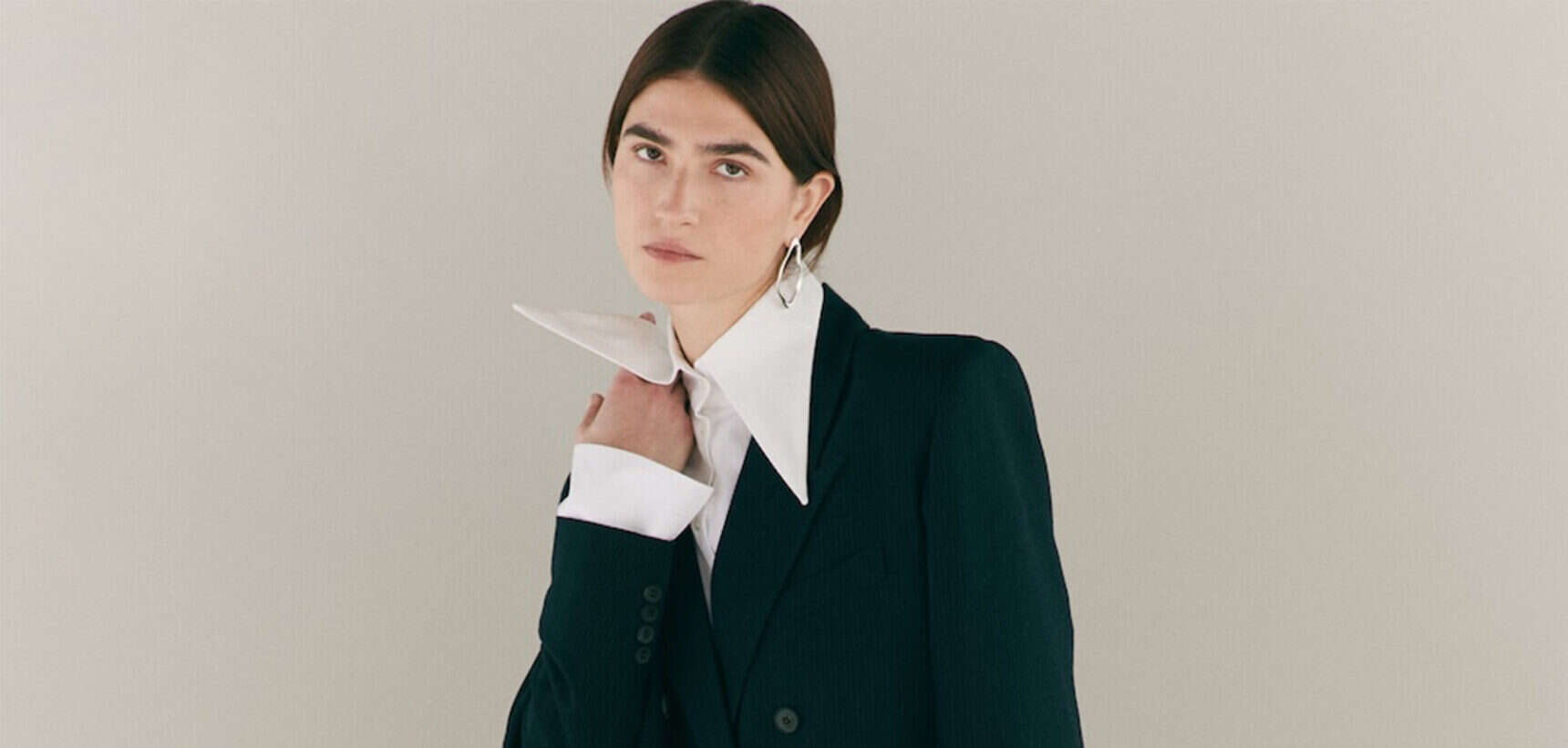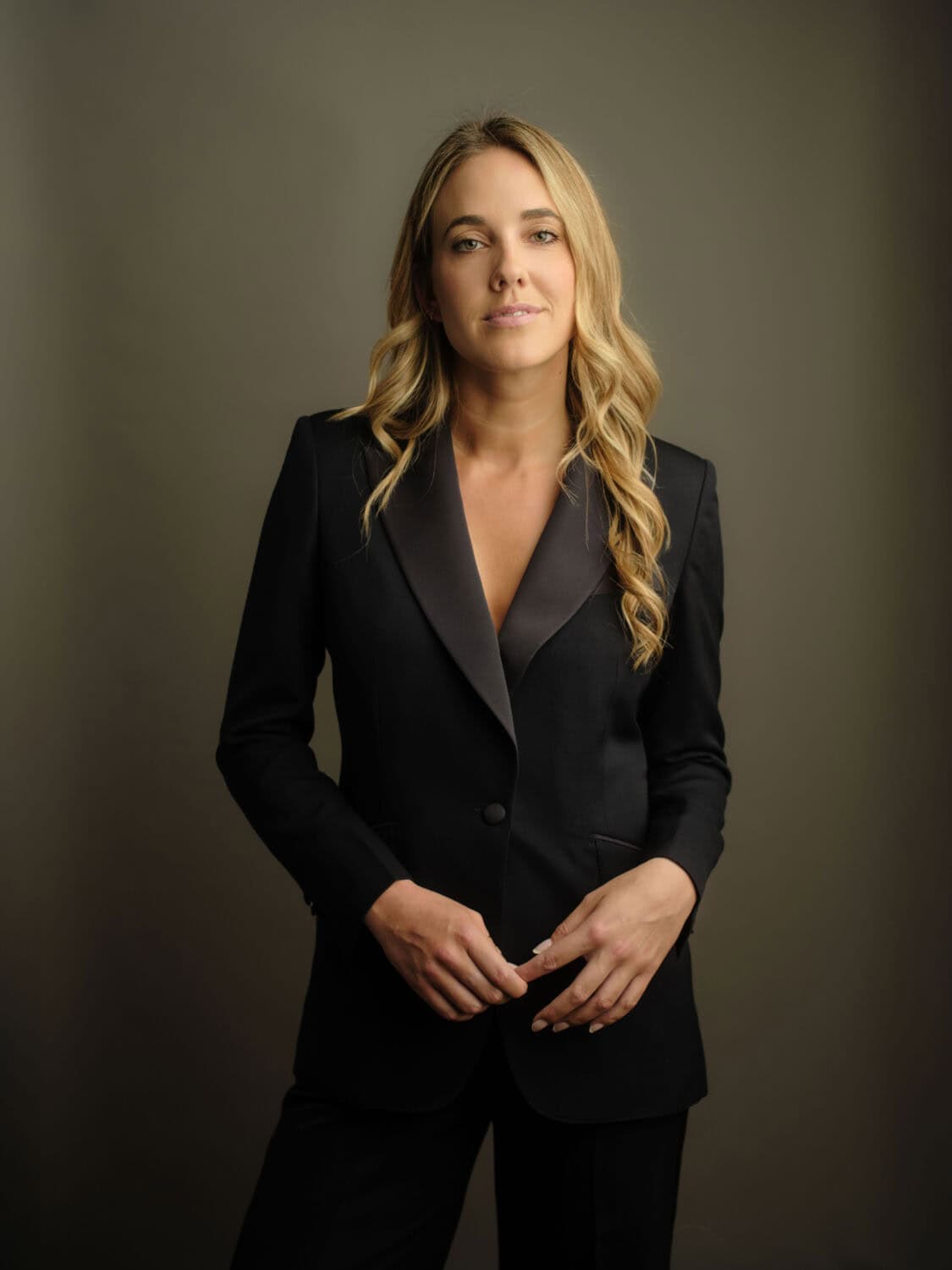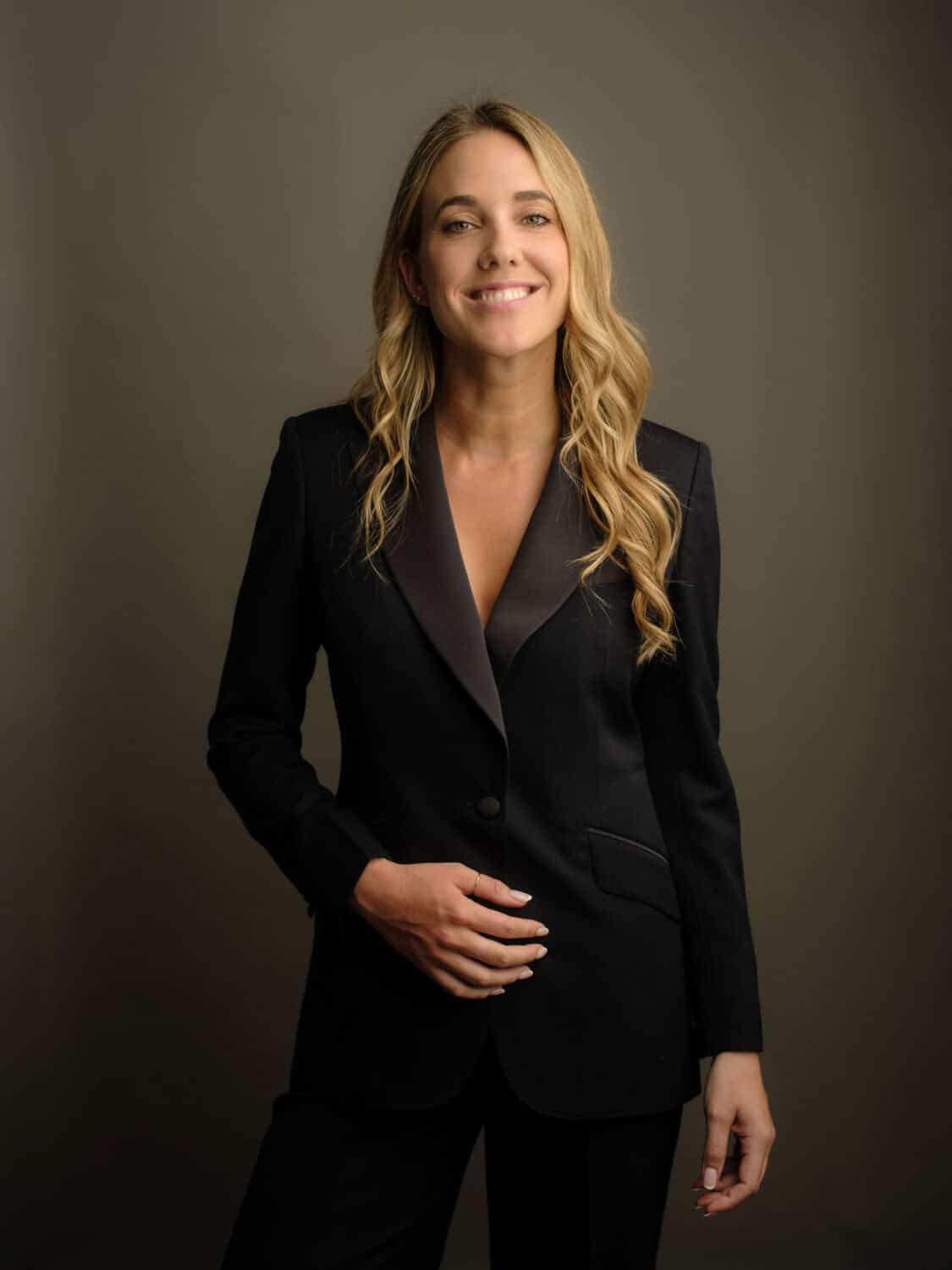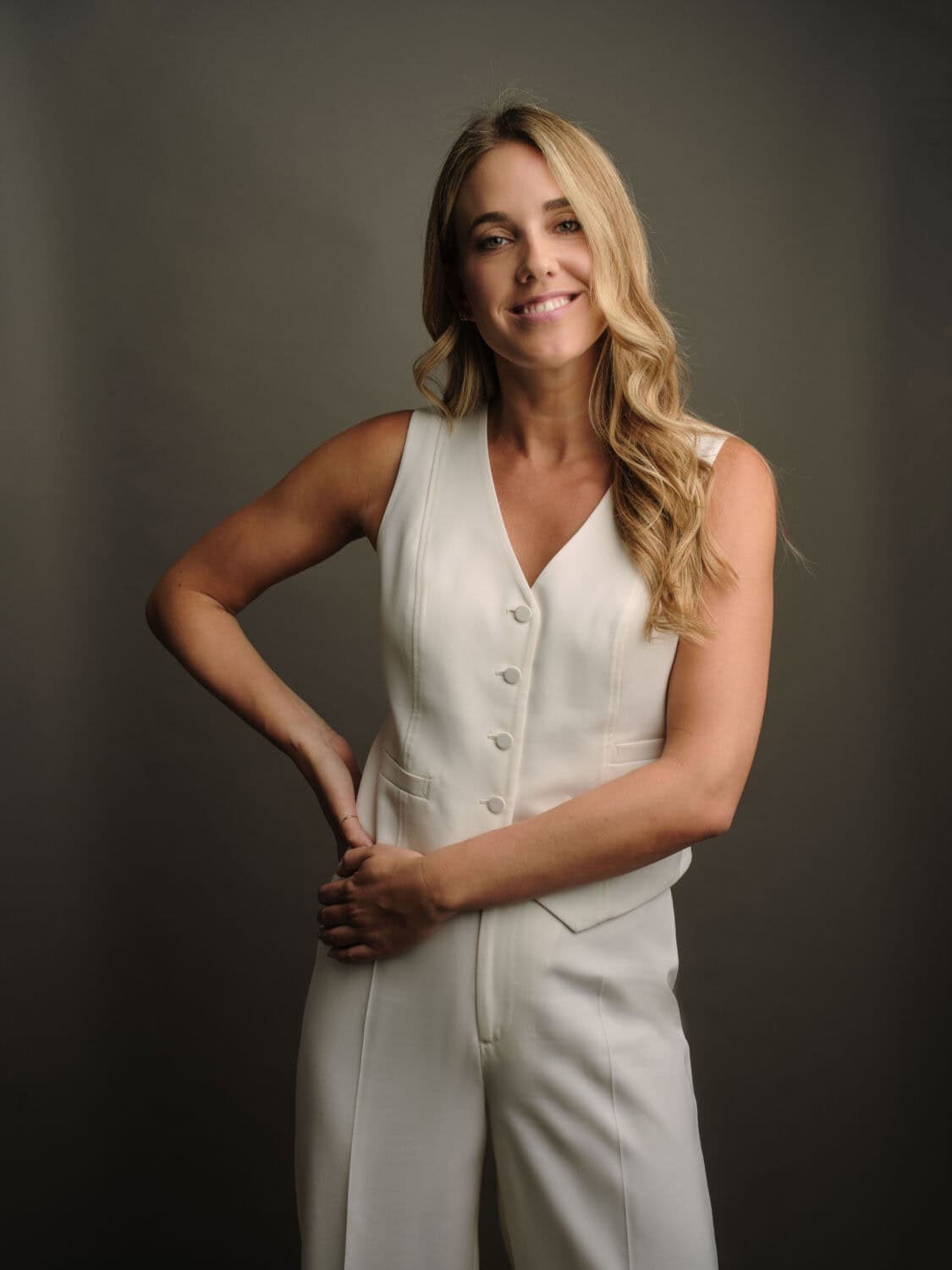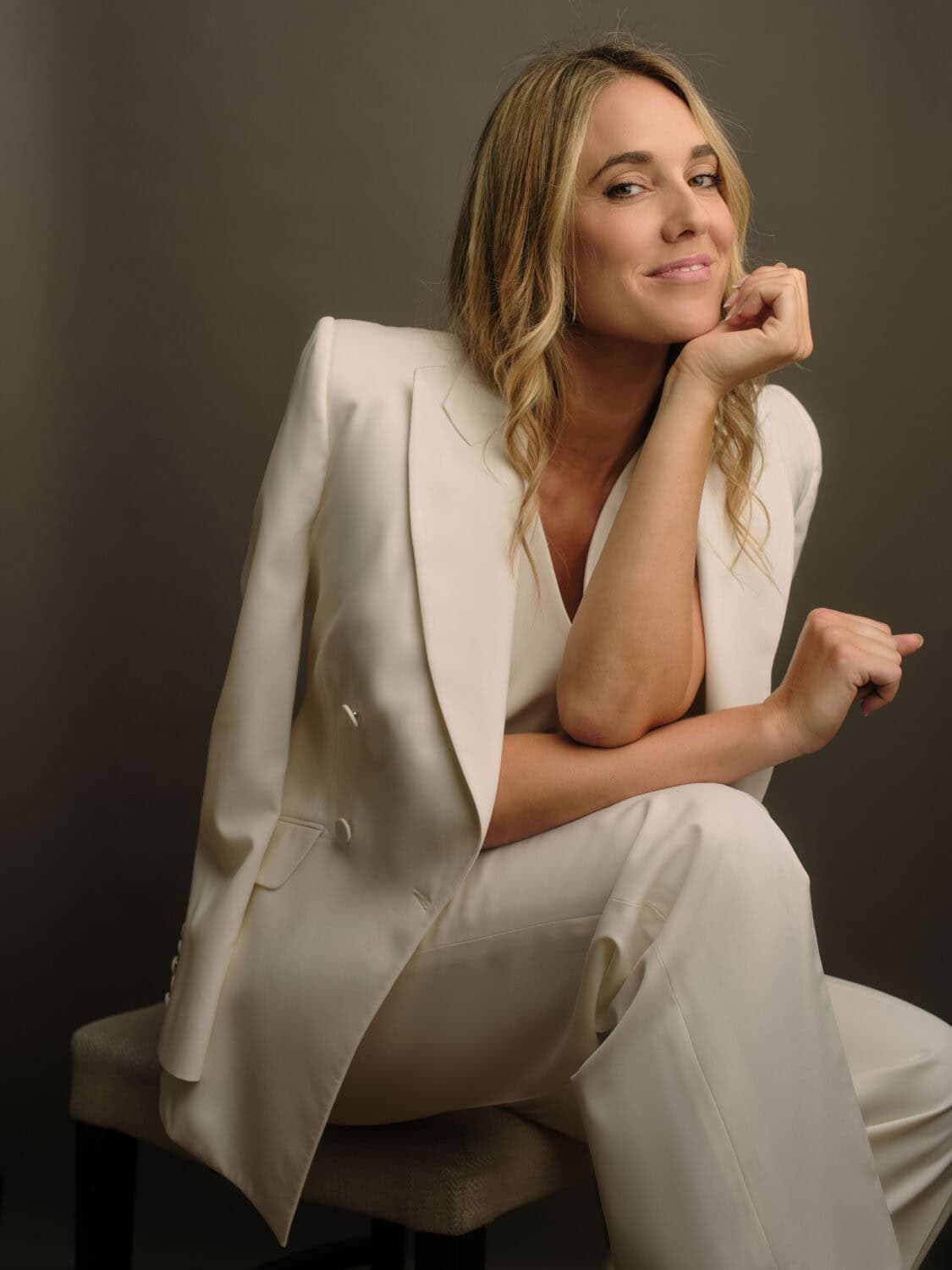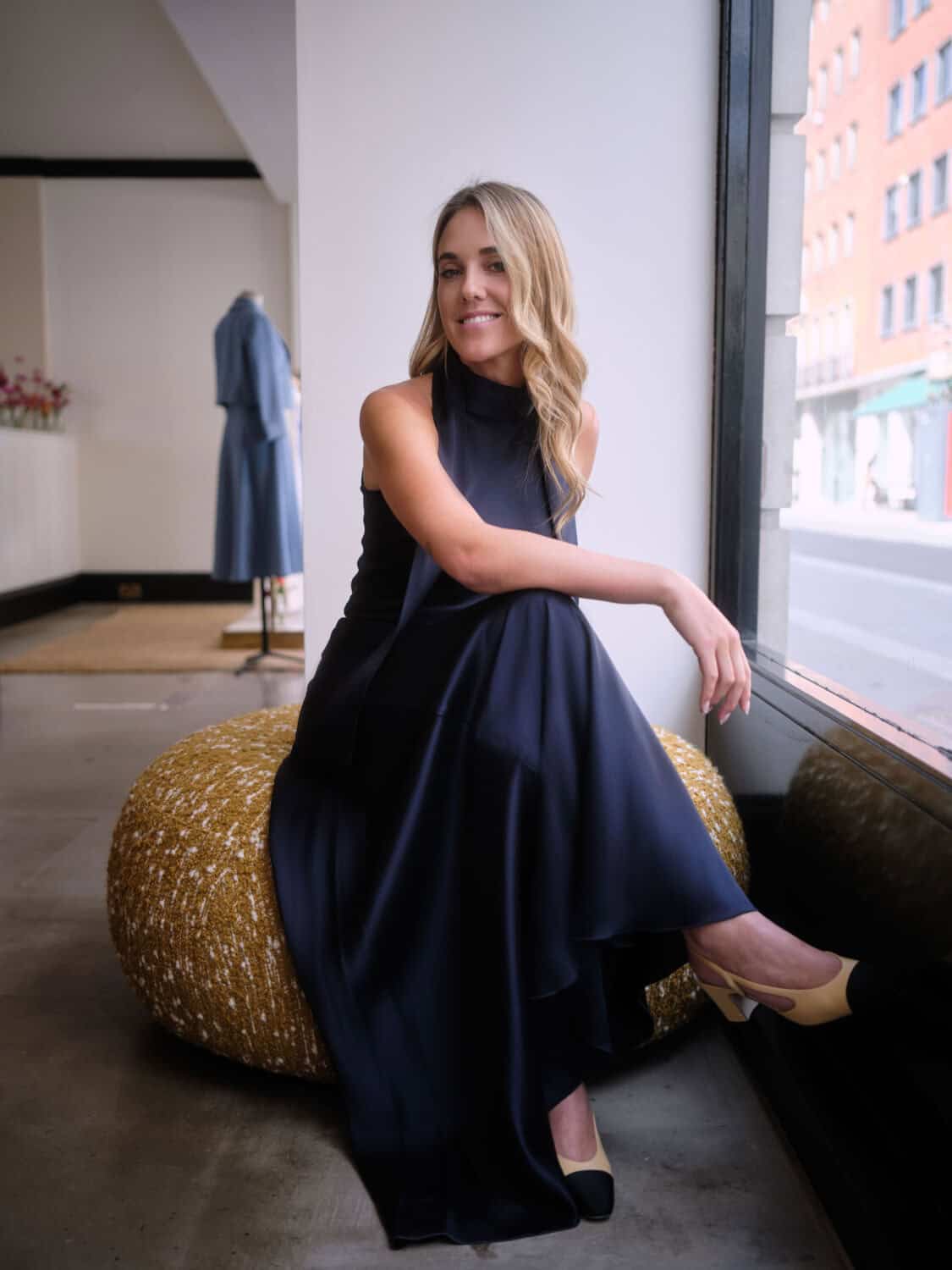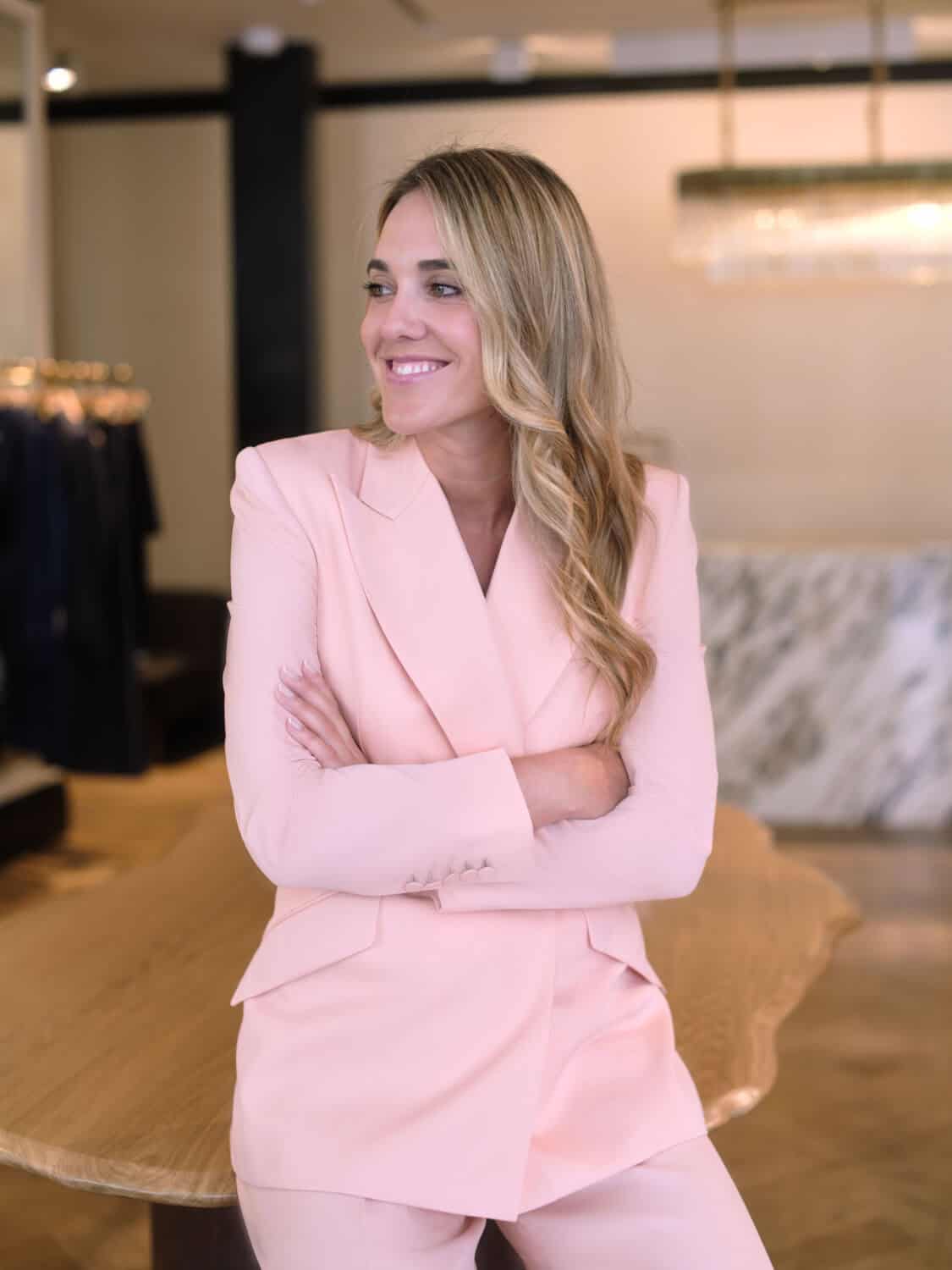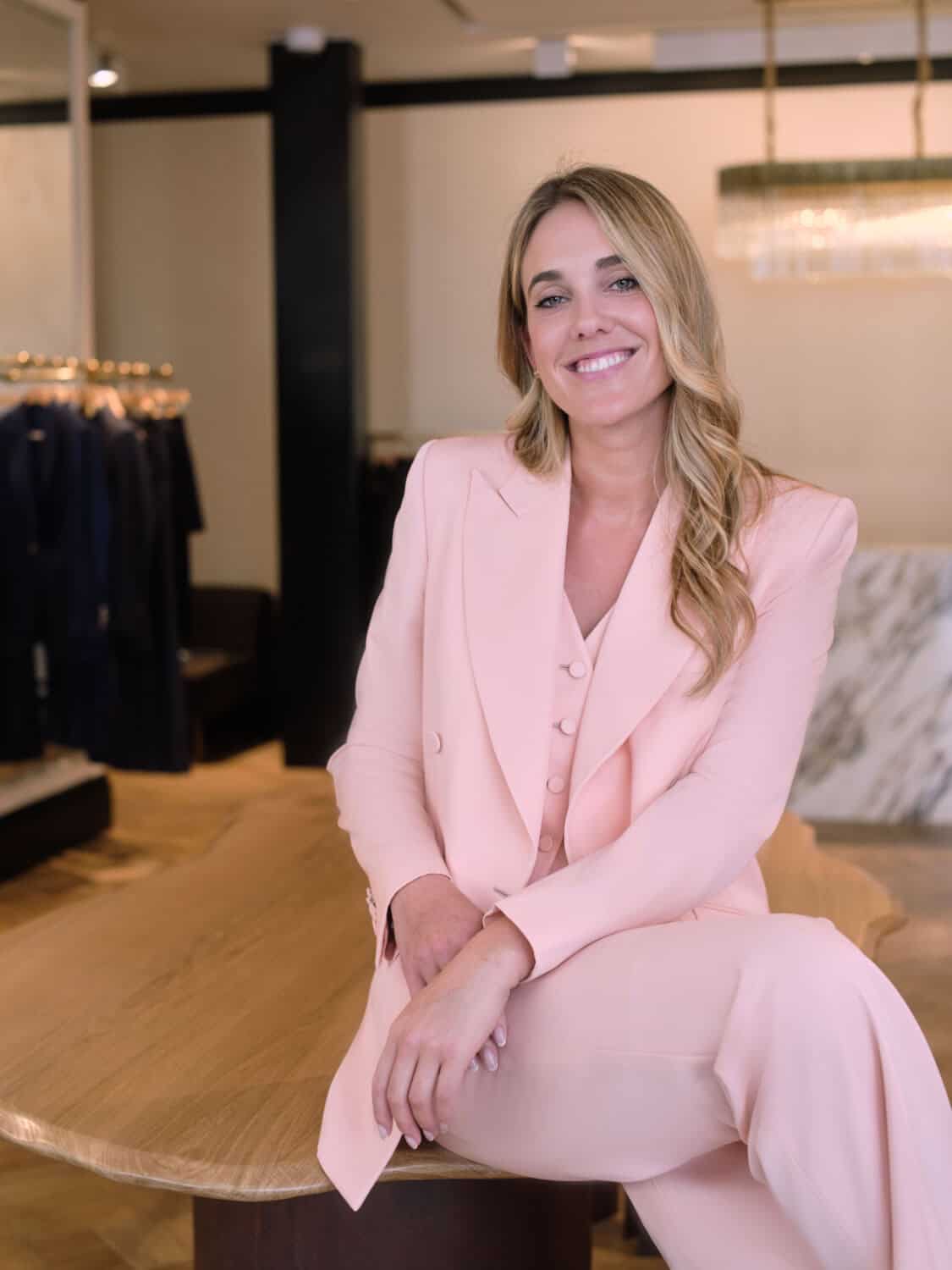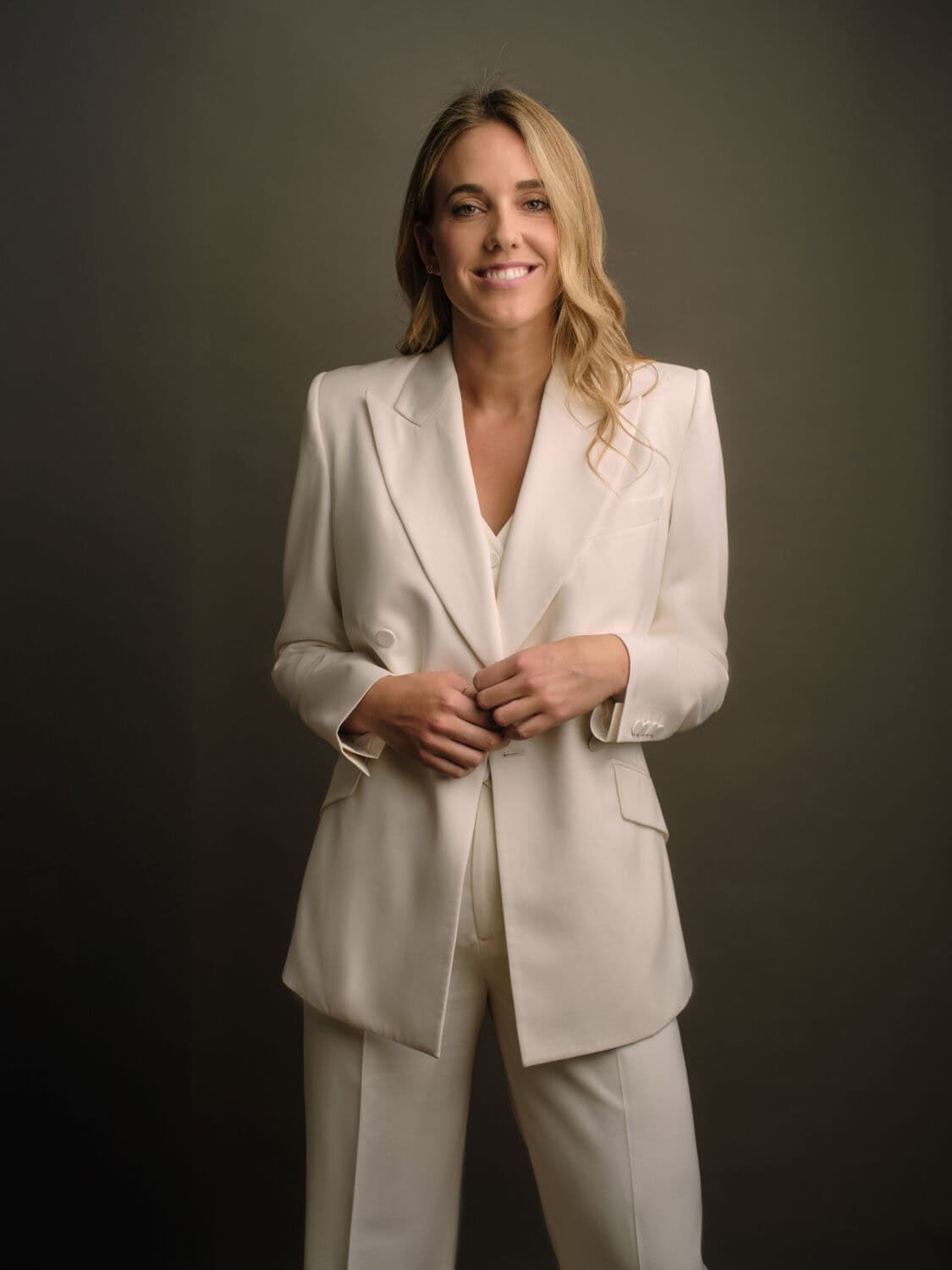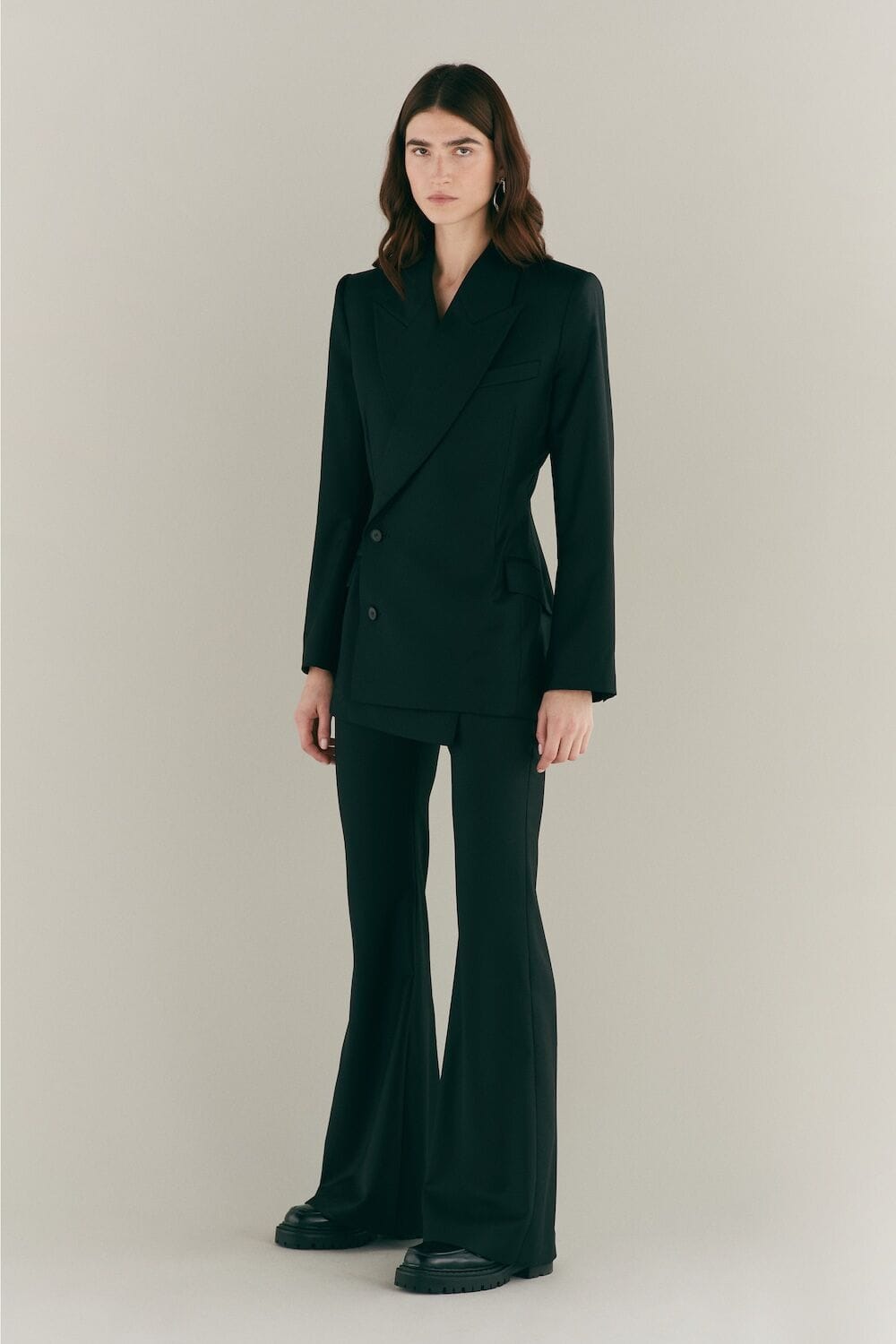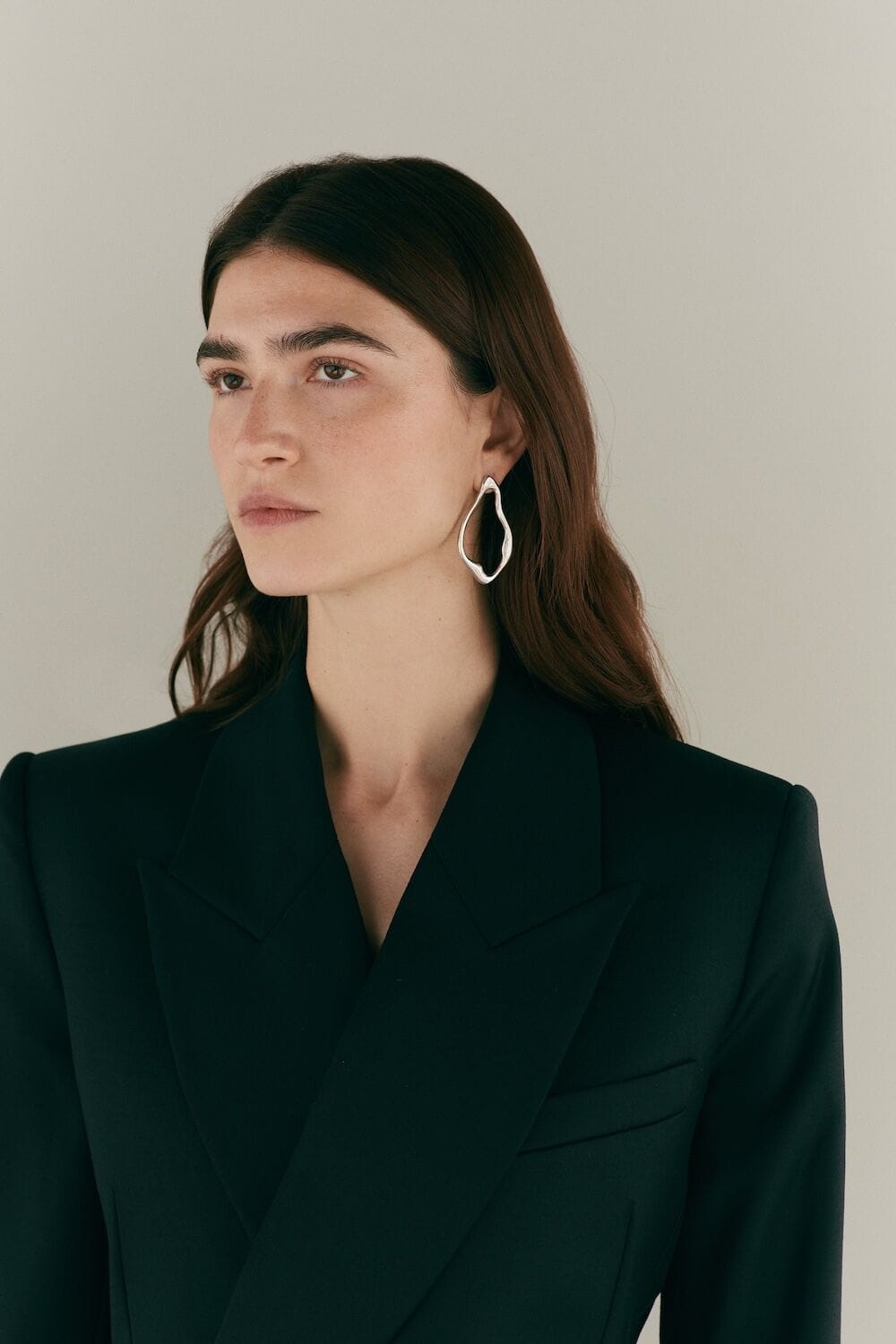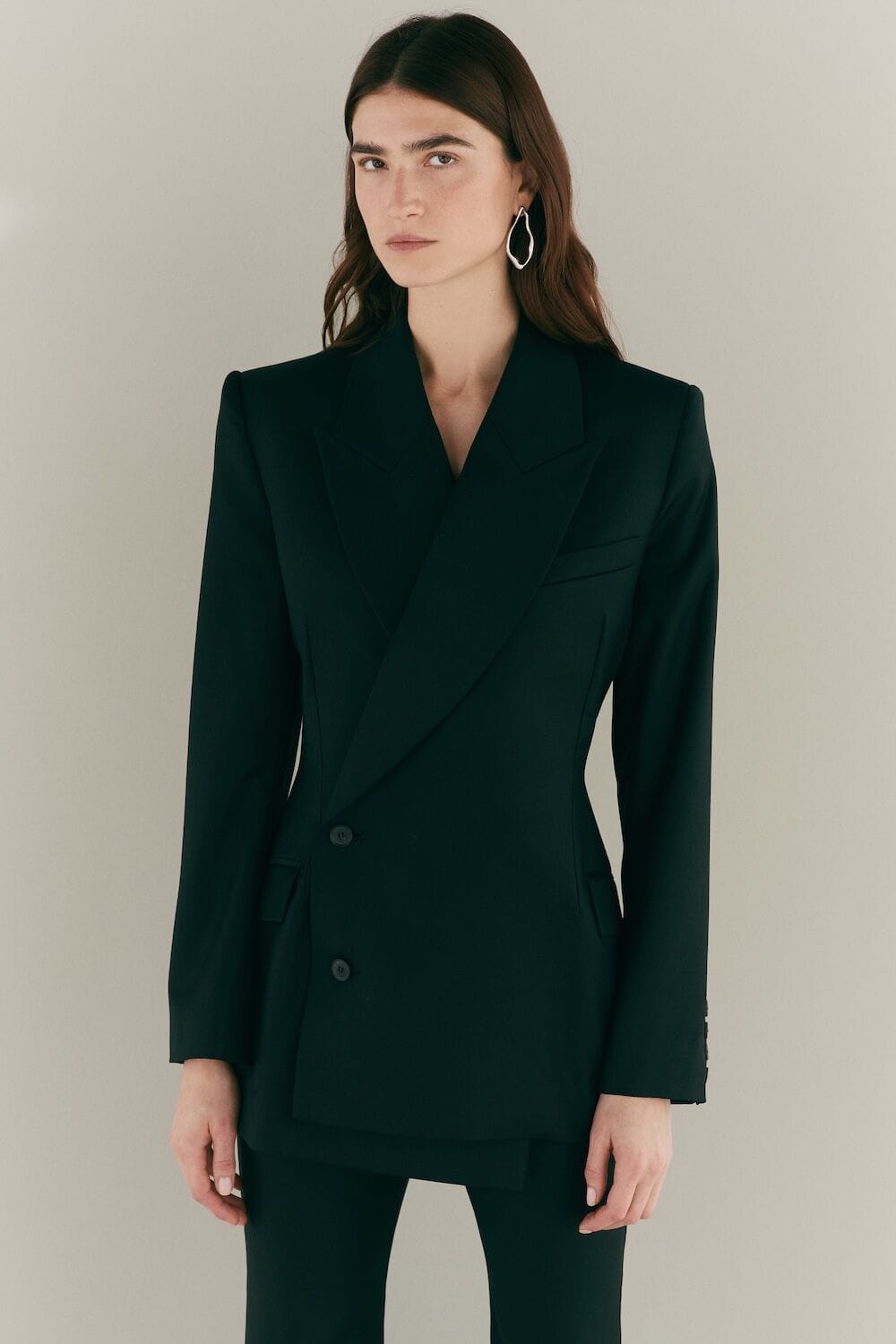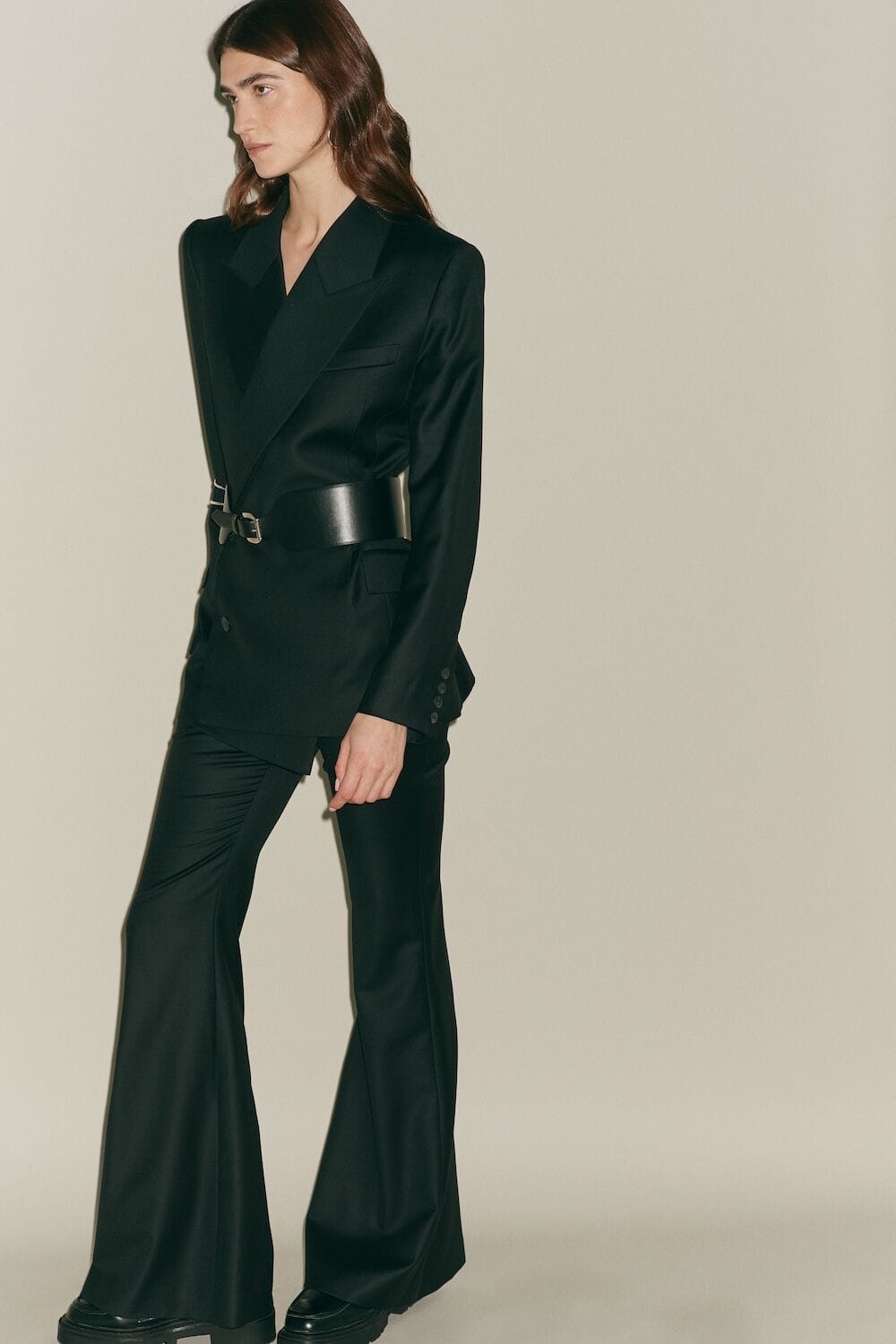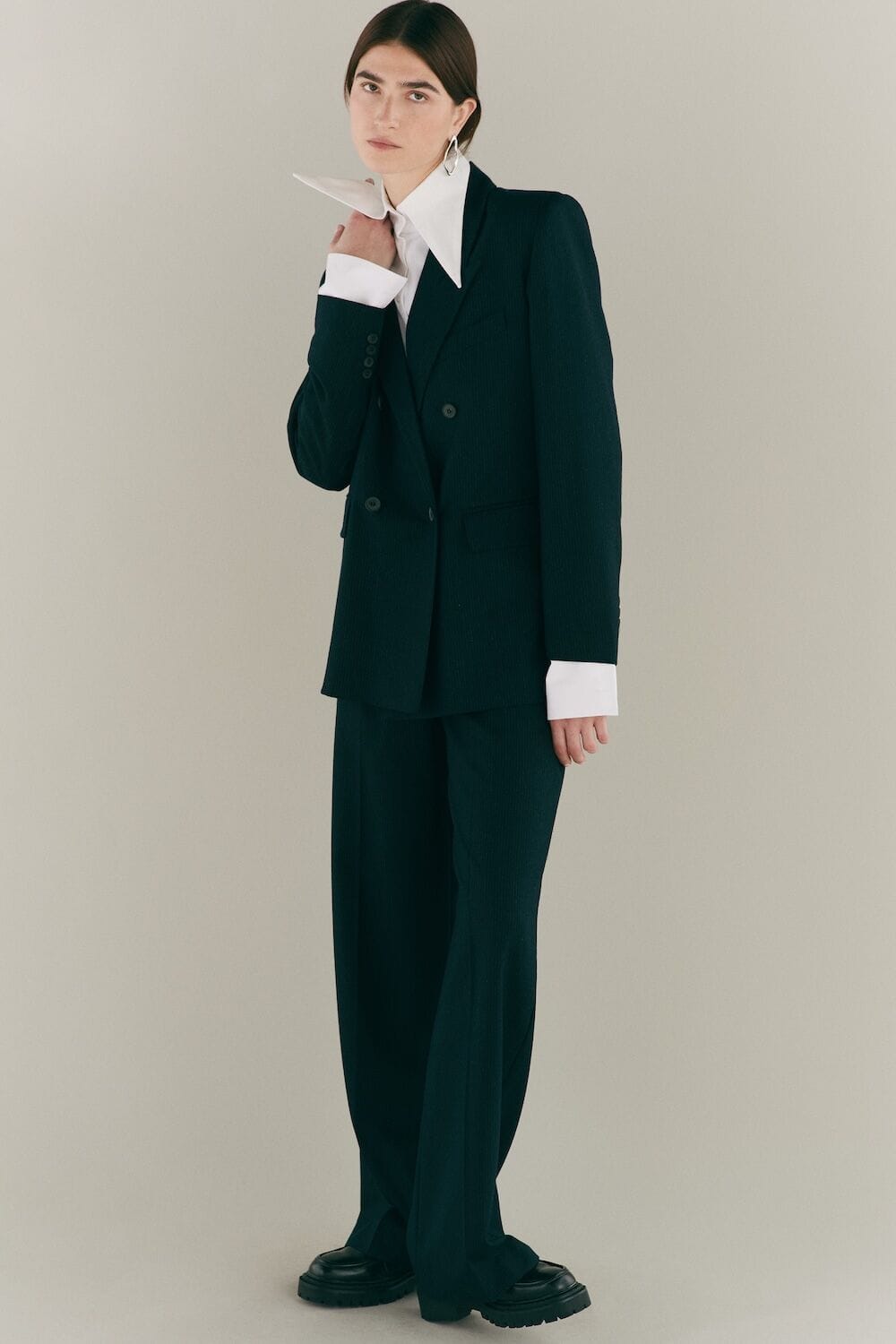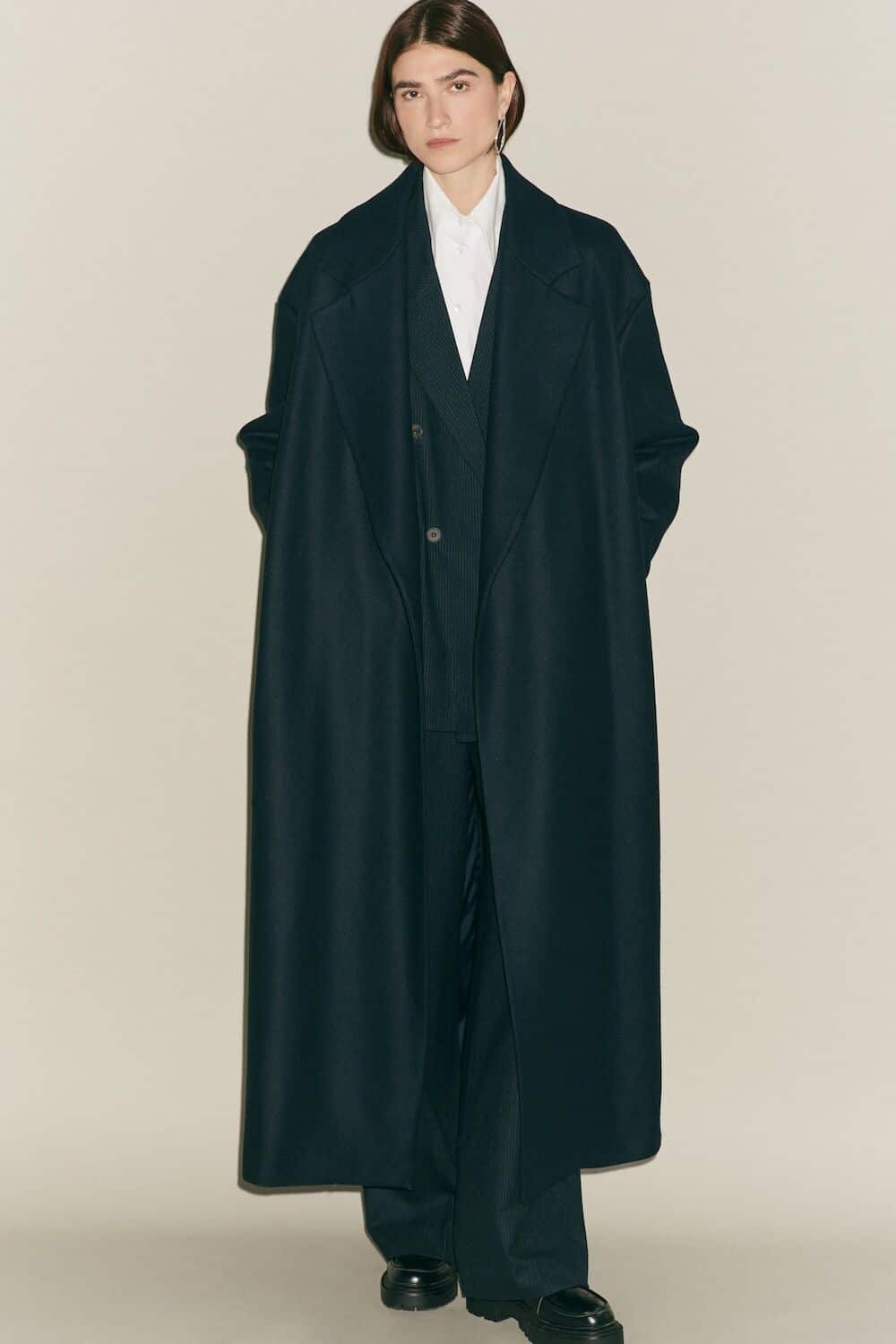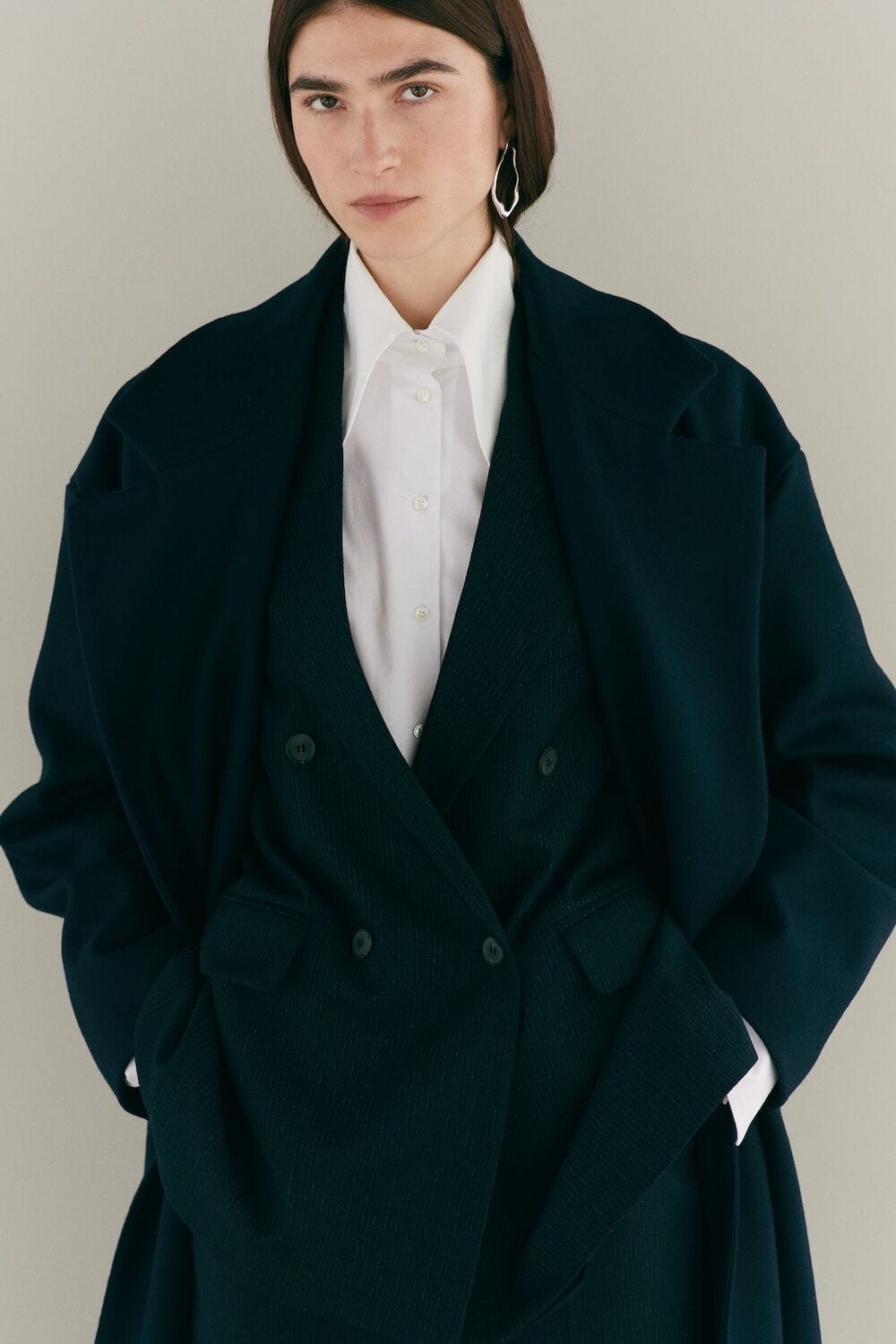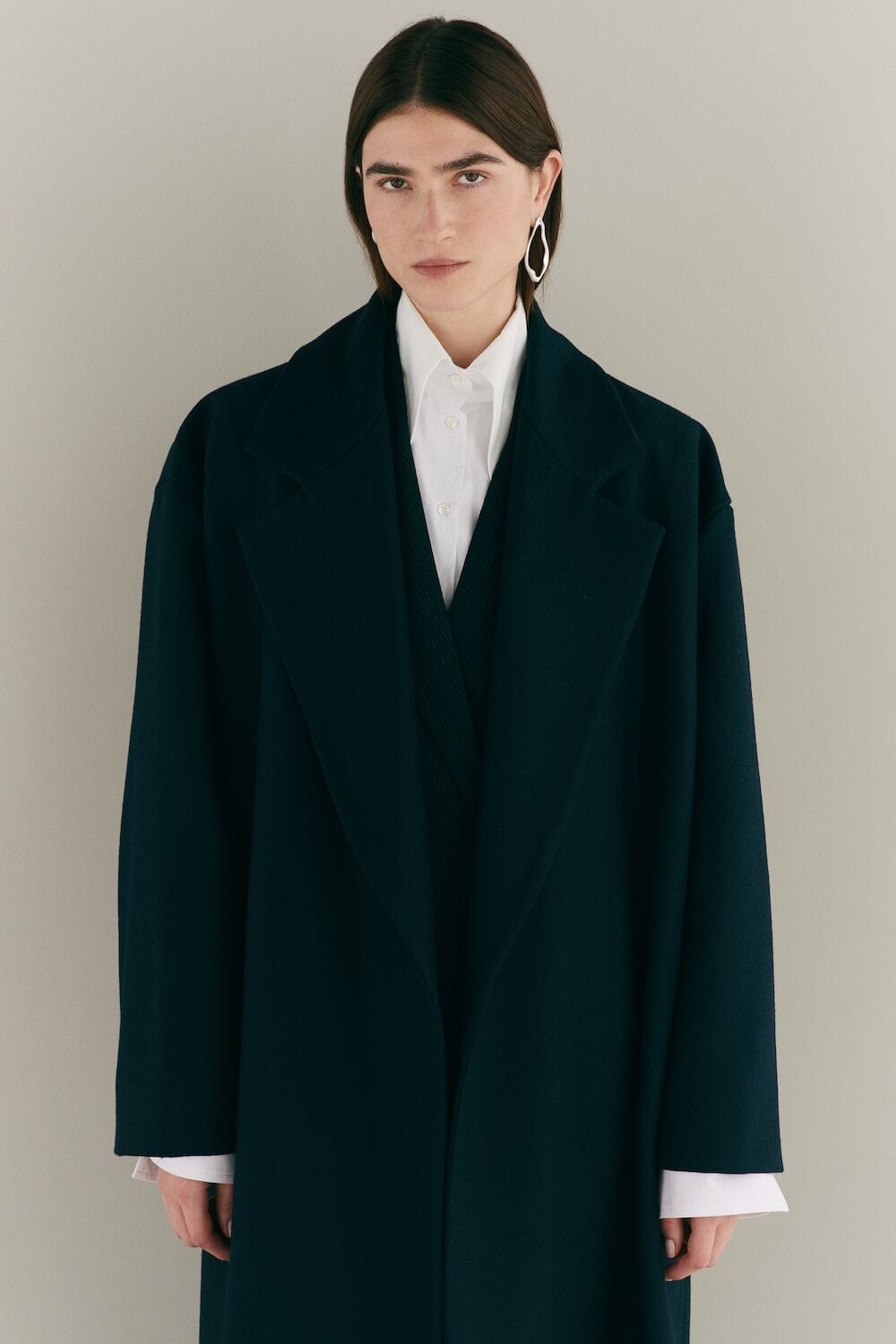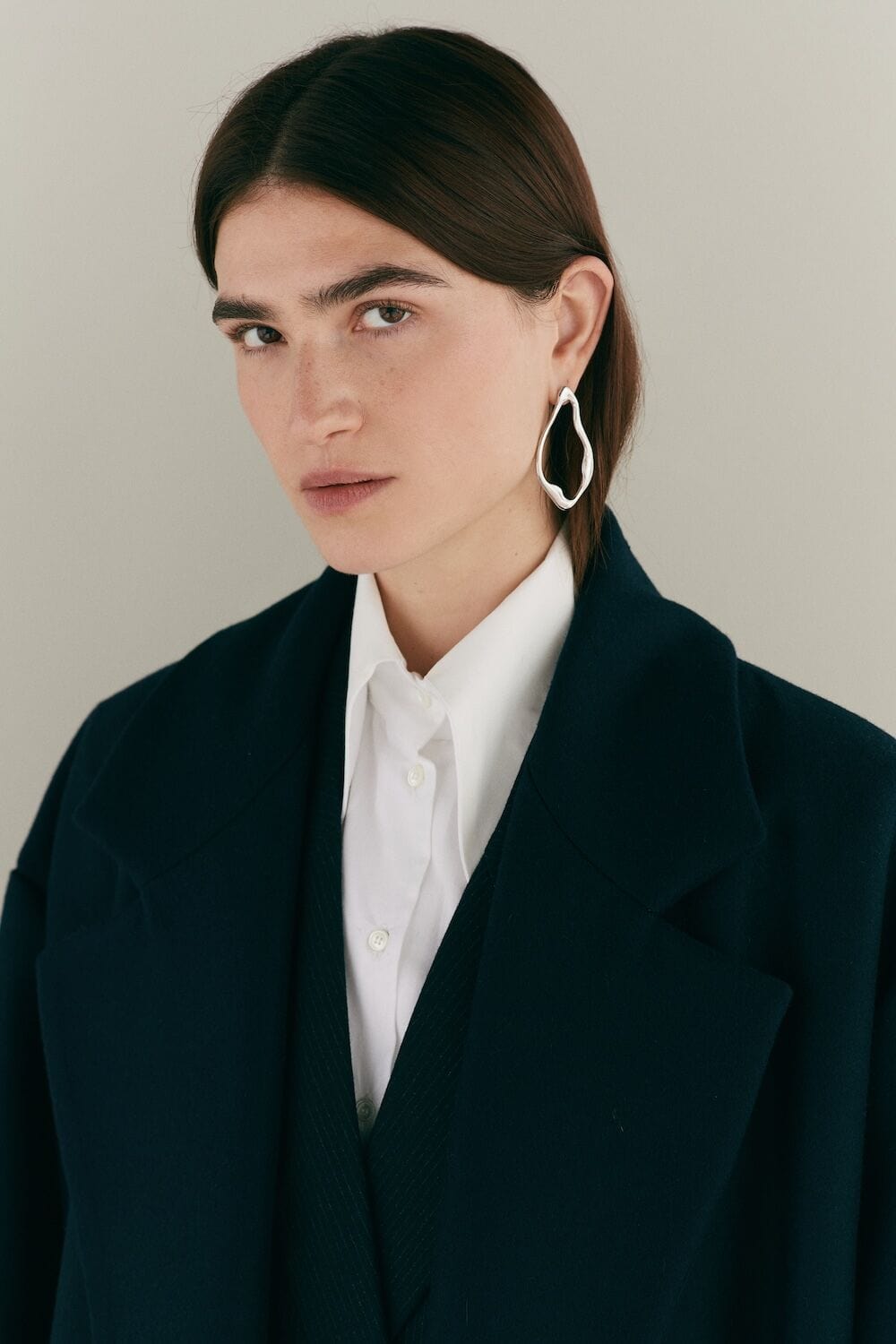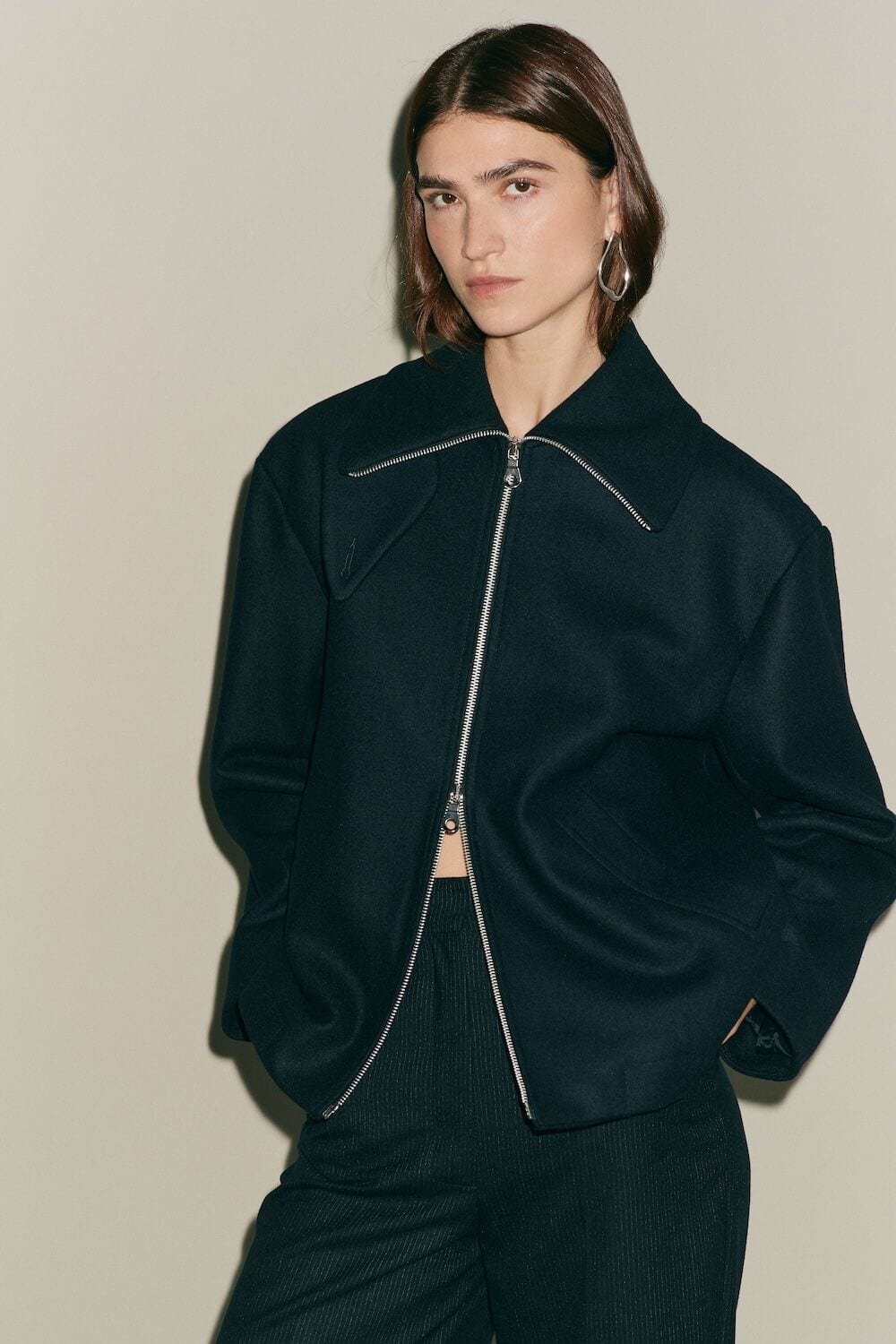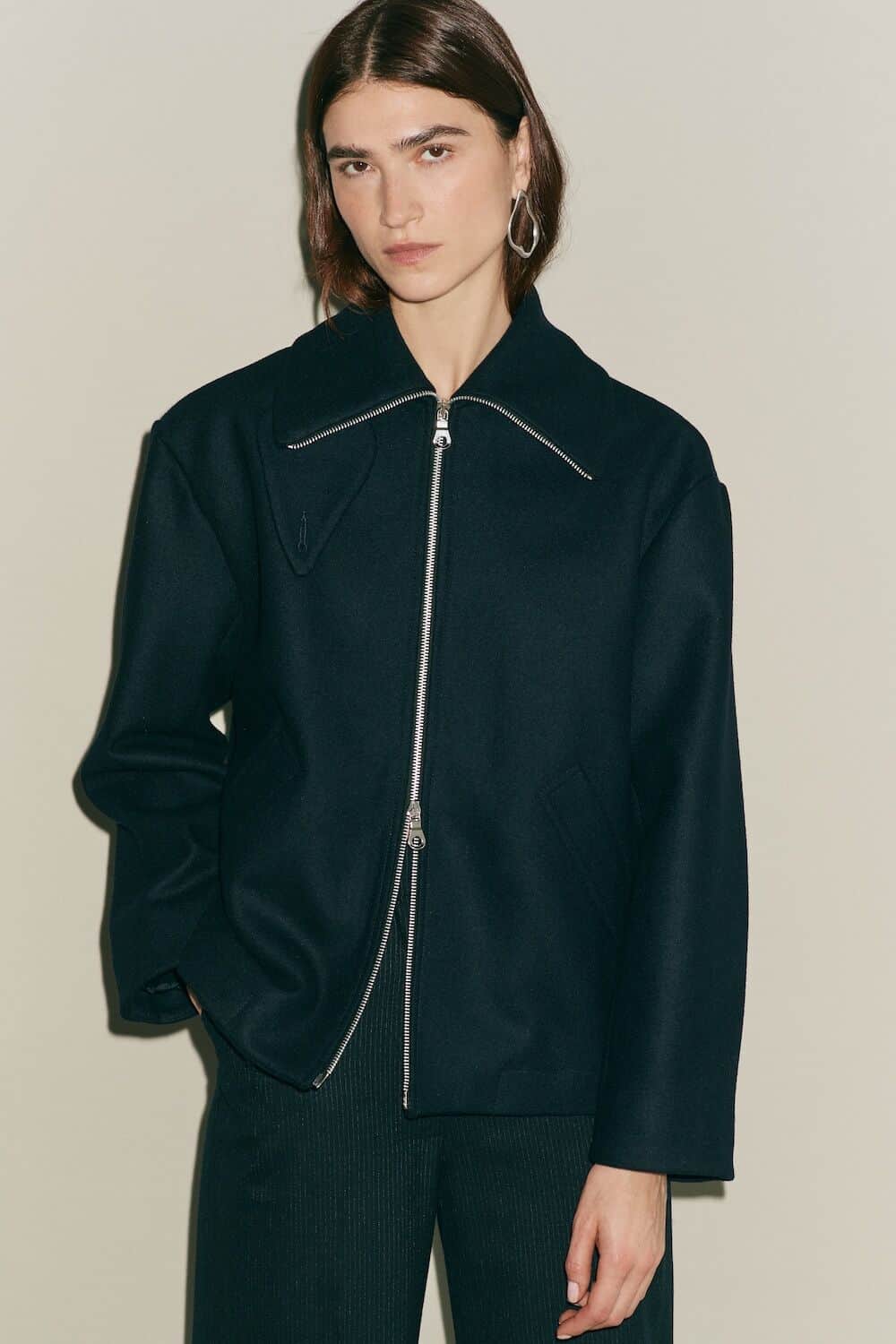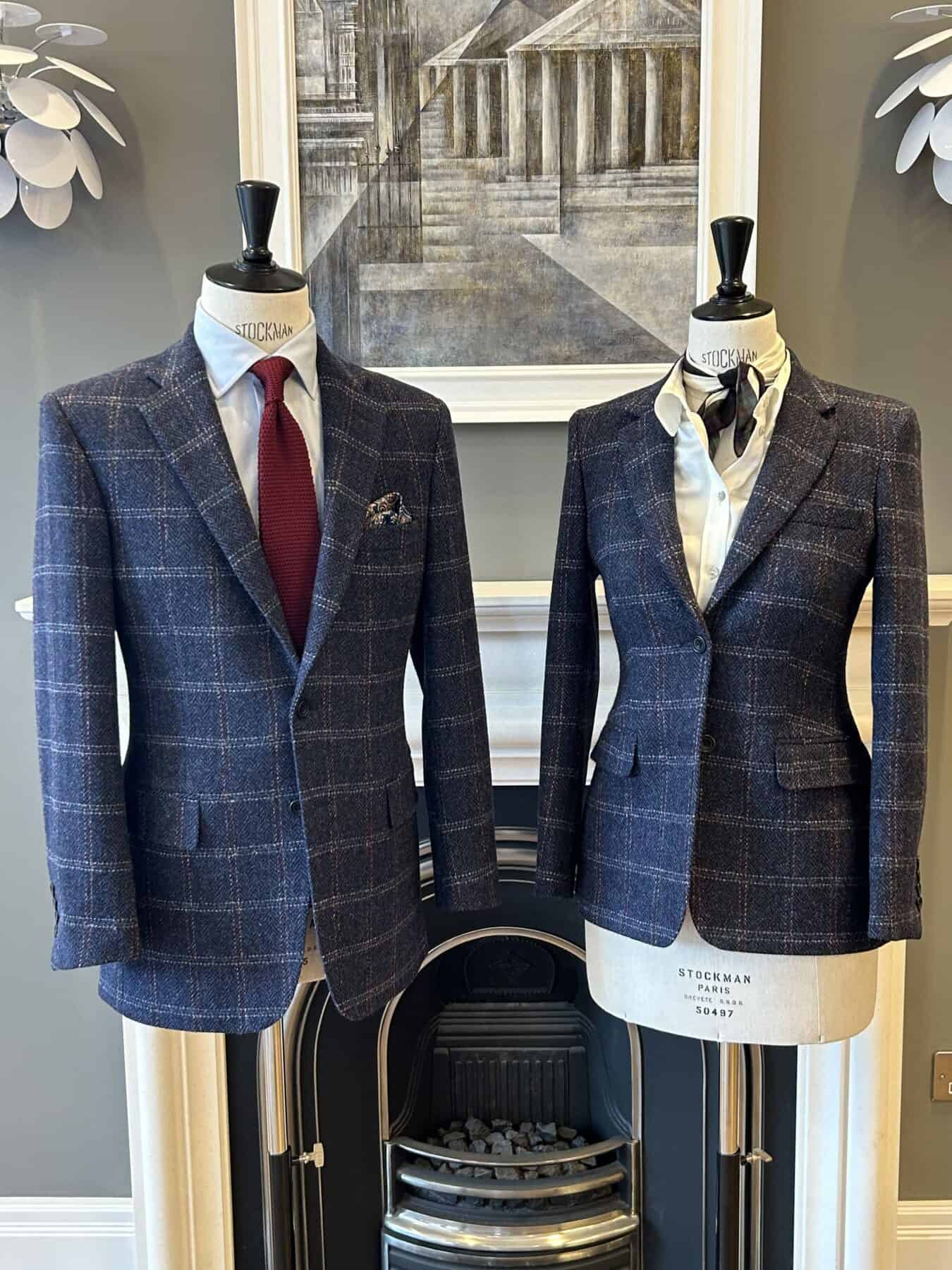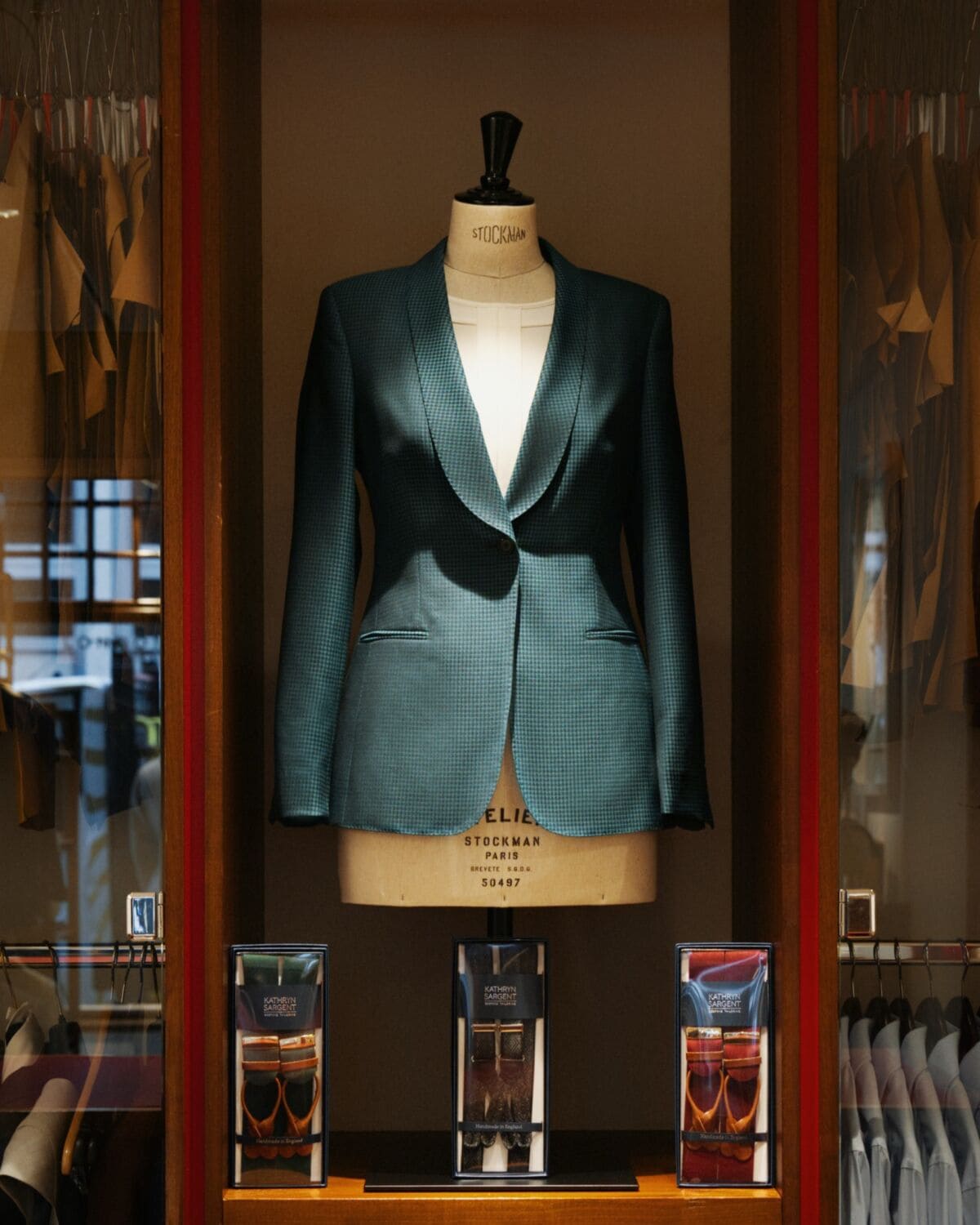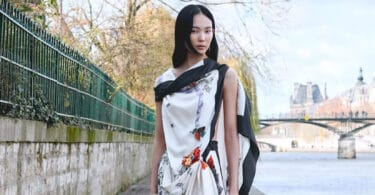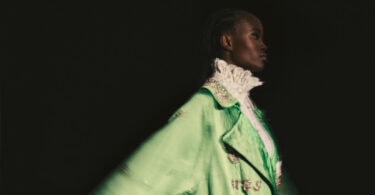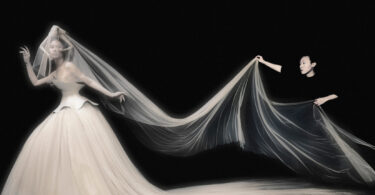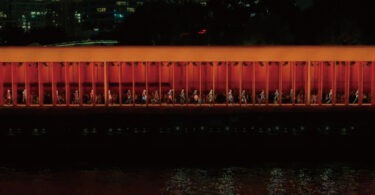There’s something deliciously subversive about a woman behind a tailor’s table. For centuries, tailoring has been wrapped in the aura of men – Savile Row pinstripes, stiff collars, suits cut sharp enough to draw blood. But step into certain workshops across the UK right now and you’ll find a quiet revolution happening. The hum of sewing machines is no less precise, the chalk lines no less exacting, but the vision belongs to women who are reshaping the way we think about tailoring itself.
These three women – each with her own corner of the country, her own fiercely defined aesthetic – are rethreading tradition with something unapologetically modern. They’re cutting for bodies that aren’t always considered in a classic pattern book, designing with sustainability stitched into every seam, and building businesses that feel more like communities than ateliers. In their hands, tailoring is less about rigidity and more about possibility: clothing that empowers, celebrates and – yes – still looks devastatingly sharp.
In a world where fast fashion looms large, their craft is a reminder of slowness, of intimacy, of artistry. Step inside their shops and you’ll sense it immediately: tailoring isn’t just being disrupted – it’s being reborn, one impeccably sewn suit at a time.
Daisy Knatchbull – Knatchbull, Savile Row
Daisy Knatchbull is the trailblazer of Savile Row, rewriting a 200-year-old story with Knatchbull, the first and only women’s tailoring house to have a shopfront on the storied street. As founder and CEO (formerly of The Deck London), she’s carved out a space where sharp suiting meets unapologetic femininity. Think tradition, tailored – and turned entirely on its head.
How did you break into the industry and particularly, how did you get into tailoring?
I began my career at Huntsman, one of Savile Row’s oldest bespoke tailors and I worked there for five years as the brand’s communications director. During my time, I was exposed to the deeply traditional world of men’s bespoke tailoring and noticed the lack of contemporary alternatives for women. This realisation was a catalyst for founding Knatchbull (previously The Deck) in 2019 – built to provide women with the same experience of Savile Row tailoring that men had enjoyed for centuries.
Tailoring of course, is very focused on form and has in the past predominantly targeted the male figure. How does your experience wearing clothes as a woman influence your approach to tailoring?
As women, my team and I understand first-hand how transformative a well-cut garment can be. Our approach to tailoring has always been about listening to our clients – understanding their bodies, their personal relationship with clothing and their needs – and translating that into a design that truly represents them. Tailoring should be a celebration of diversity, and for me, it’s about creating pieces that feel effortless, versatile and empowering – giving women the opportunity to show up as their most confident selves.
Do you feel tailoring still carries gendered expectations? How do you navigate or challenge that? Have you faced any barriers or biases as a woman in this field?
Historically, tailoring has been synonymous to men, but times are changing – you now see many more of the traditional brands offering alternatives for women. The same notion was carried forward when we opened Knatchbull on Savile Row – the first women’s-only shopfront on the historic street. Savile Row has welcomed us with open arms, and I have always chosen to view any “barriers” as opportunities.
What changes would you like to see in the industry when it comes to representation and recognition of women in tailoring?
It would be great to see more women take up the craft from within – as cutters, tailors, designers, owners. We have an all-female team at Knatchbull that makes us more attuned to the female body and best placed to represent it. While there is still some work to be done to challenge the perception of Savile Row as a male-dominated space, there is definitely an appetite for change and it’s exciting to be part of it. Many of the Savile Row houses now feature women’s mannequins in their windows and this year, a female coat making apprentice won the prestigious Golden Shears award (in fact all three awards were claimed by women). All signifying change in the industry.
What excites you most about the future of tailoring?
Tailoring is no longer confined to any rigid rules, it has become a canvas for personal expression. At Knatchbull, we encourage clients to personalise their pieces; whether it be secret embroidery, bespoke linings or stitching in personal items such as wedding bands into garments. There is definitely a rise in the democratisation of tailoring, as it moves away from tradition towards individuality. For me, that’s the future.
Laura Pitharas
Laura Pitharas is the designer rewriting the rules of tailoring, bringing femininity and understated elegance to silhouettes once reserved for men. With fabrics sourced from Yorkshire mills and every piece crafted in North London, her label champions sustainability and transparency at its core. She calls it “menswear for womenswear” – sharp, enduring and designed to make women feel their absolute best.
How did you break into the industry and particularly, how did you get into tailoring?
I trained in Menswear Tailoring at London College of Fashion knowing I wanted to leave university with a respected craft and skill. From a young age, I was inspired by the beauty of cloth and the craftsmanship of tailoring. My father was a city worker who still to this day wears sharp tailoring matched with timeless leather brogues and he introduced me to the ideology of quality over quantity. He is a self-made man who dreamed of investing in beautiful pieces which lasted a life time and that made you feel elegant yet understated. I worked in the industry for 10 years as a designer before launching LP. It was important to me to go back to my roots in tailoring and to create perfect fitting women’s suits tailored for the female form with the masculine edge in design. As a designer, I searched the market for a suit made sustainably from 100 per cent wool which could be worn both professionally and socially. I love how tailoring makes you feel, it builds you with confidence with minimal effort. All our pieces are made in the UK. I wanted to work with and collaborate with British artisans and support the mill industry we have here in the UK.
We work with the family run mill, Alfred Brown for all our wool suiting, they are based in Leeds and everything is still woven in Yorkshire working only with wool which is certified non-mulled ensuring ethical farming. The mill is powered by electricity supplied by wind farms and continued to employ generations of local familes. When I visited the mill, I met generations of family members still working in the mill from the grandmother to the granddaughter. Our thicker coating wools are from the Mill Dugd.
Tailoring of course, is very focused on form and has in the past predominantly targeted the male figure. How does your experience wearing clothes as a woman influence your approach to tailoring?
I have always borrowed clothing from my dad when I was younger, to this day my husband, or bought an oversized vintage menswear blazer or coat. I love the oversized look and this really plays into how I design LP.
I often describe the brand as menswear for womenswear, oversized fit but with clever tailoring lines which highlight the female form, so the clothing (particularly at the shoulders) does not drown the female form. I describe the brand as understated elegance.
Do you feel tailoring still carries gendered expectations? How do you navigate or challenge that? Have you faced any barriers or biases as a woman in this field?
100 per cent. Tailoring still carries gendered expectations, quite often my designs and philosophy is put into a certain box which is the opposite of what I am trying to achieve at LP. I wanted to make suiting accessible and approachable for women and to make it a norm for everyday wear without it being a huge statement or for women to be labelled as power dressing.
What changes would you like to see in the industry when it comes to representation and recognition of women in tailoring?
I think the industry is slowly changing as suiting is now currently very fashionable for women, but it takes time. Women are increasingly wearing suiting for red carpet events. One of my career and brand highlights was dressing Emma Thompson for the Bafta Awards in our LP Ivory Tuxedo. It was so beautiful see such an iconic English actress breaking the norm of red carpet dressing, opting against the more traditional option of a gown.
What excites you most about the future of tailoring?
What excites me the most is the fact that it’s ever changing, there is so much you can do when it comes to tailoring. It really is a passion for me, and I love experimenting each season, playing with proportions, nipping in at the waist, bigger and bigger lapels, wider shoulders, asymmetrical hems, it’s never ending and I enjoy the challenge to create something new each collection to keep the LP suit feeling fresh and modern.
Kathryn Sargent
Kathryn Sargent is the world’s first female Master Tailor, redefining Savile Row with her eponymous house in London and a second atelier in Edinburgh. With over 27 years’ expertise, she fuses time-honoured British craftsmanship with a modern, inclusive vision. Her bespoke garments are timeless works of sustainable luxury – tailoring for every body, every story.
How did you break into the industry and particularly, how did you get into tailoring?
I studied fashion in Epsom with a focus on menswear, and during that time, I wandered along Savile Row. I remember looking into the windows and instantly knowing – this was where I wanted to work. I wanted to become a bespoke tailor. It dawned on me that I had been influenced all along by my father, who was an elegant dresser and always wore impeccably tailored clothing. I was fascinated by the idea of what it was about a suit that made someone look so special.
I was fortunate to secure an apprenticeship at Gieves & Hawkes after earning my degree, and it was there that my passion truly ignited. I realised just how much skill, dedication, and time go into each garment and how much I had to learn. It wasn’t going to be easy to create the kind of suits I admired in those windows, so I worked incredibly hard, studied the craft, and embraced every challenge.
Tailoring of course, is very focussed on form and has in the past predominantly targeted the male figure. How does your experience wearing clothes as a woman influence your approach to tailoring?
Tailoring has historically been very focused on the male form, my experience as a woman has given me a different perspective. I know firsthand, as well as from many women in my network, how frustrating it can be to find clothes that truly fit. At Kathryn Sargent Bespoke, unlike other houses, we break with tradition by designing for all genders, focusing on the lifestyle and personality of each client. For me, tailoring isn’t about imposing a house style.
A key part of my approach is about the fabric. I learned early on that tailoring isn’t just about what you see, it’s about what you feel. A tutor once told me, “You can’t judge cloth by sight alone; you have to touch it.” That principle shapes my whole approach. The weight and texture of the fabric, as well as the way it moves, drapes, and folds against the body, is just as important as its appearance. I encourage clients to engage with that process, to feel the cloth, explore what resonates with them, and express their individuality. Some clothes work better for women’s tailoring, some more appropriate for menswear.
Ultimately, my goal is simple. I want everybody who commissions something from me to feel and look their best.
Do you feel tailoring still carries gendered expectations? How do you navigate or challenge that? Have you faced any barriers or biases as a woman in this field?
Every field has its challenges, but in tailoring, the true measure of a tailor’s ability isn’t based on whether they are male or female; it lies in their skill set, training, and qualifications.
It is also essential to understand the craft of bespoke tailoring and the differences between bespoke, made-to-measure, and ready-to-wear garments. The level of skill required to become a Bespoke Master Tailor takes years and years and immense dedication. I’m proud to be the first, and still the only woman to achieve that position.
I was initially drawn to menswear tailoring because it was the core of bespoke garments, and during my degree, I created a Harris Tweed collection that won a British Wool Marketing Board award. That opened my eyes to both the traditions and the possibilities of the craft. When I founded my business, I wanted to broaden tailoring’s appeal, especially for women.
Today, women make up around 40 per cent of my clients.
At times, I faced barriers early on, being judged more for my appearance than for my work. My strategy was to work hard and let the craft speak for itself. What once felt like a disadvantage has become a strength. I bring a fresh perspective to tailoring, which has allowed me to help open doors for women in a space that was never initially a place designed for us.
What changes would you like to see in the industry when it comes to representation and recognition of women in tailoring?
I’d love to see more visibility and recognition for women in tailoring, because for so long we were there, but often behind the scenes. Traditionally, women played vital roles like finishing, stitching, and buttoning. Those roles were essential, but they weren’t always given the recognition they deserved. We’re now seeing a new era of tailoring, with more women entering the field not just in supporting roles, but at every level of the industry.
Over time, I’ve realised that embracing my femininity and being myself is the best thing I’ve ever done. I want more women to feel they can do the same, to be themselves and pursue what they’re passionate about, rather than adapting to an outdated idea of what a tailor should look like.
That’s why I helped start Women in Tailoring, a network and series of events where we can connect, celebrate our uniqueness, and most importantly, provide access. Access is how we create real change through providing opportunities and mentorship. I want the industry to see women not as a novelty, but as an integral part of its future.
What excites you most about the future of tailoring?
A lot excites me! I love seeing my clients around the world, I’m proud of how our two ateliers are growing, I love talking about tailoring… about commissions, about amendments, about cloth, helping solve our clients wardrobe dilemmas, from a suit to celebrate a promotion or an award ceremony to complimentary suits for a wedding couple. Every day is different, and that brings me great joy. Tailoring is continuously evolving. We are seeing a younger generation, both men and women, coming to us because they seek clothing that is personal and reflects their individuality and values.
We live in a world that is becoming increasingly digital and filled with mass-produced items. However, you can’t replicate the personal service, craftsmanship, and individuality that go into bespoke garments. A handmade garment has longevity. It is crafted from beautiful British wool, one of the most sustainable fibres, and is tailored to last for years. To me, that makes the future of bespoke not only exciting but also essential.
Top image: photography courtesy of Laura Pitharas.



